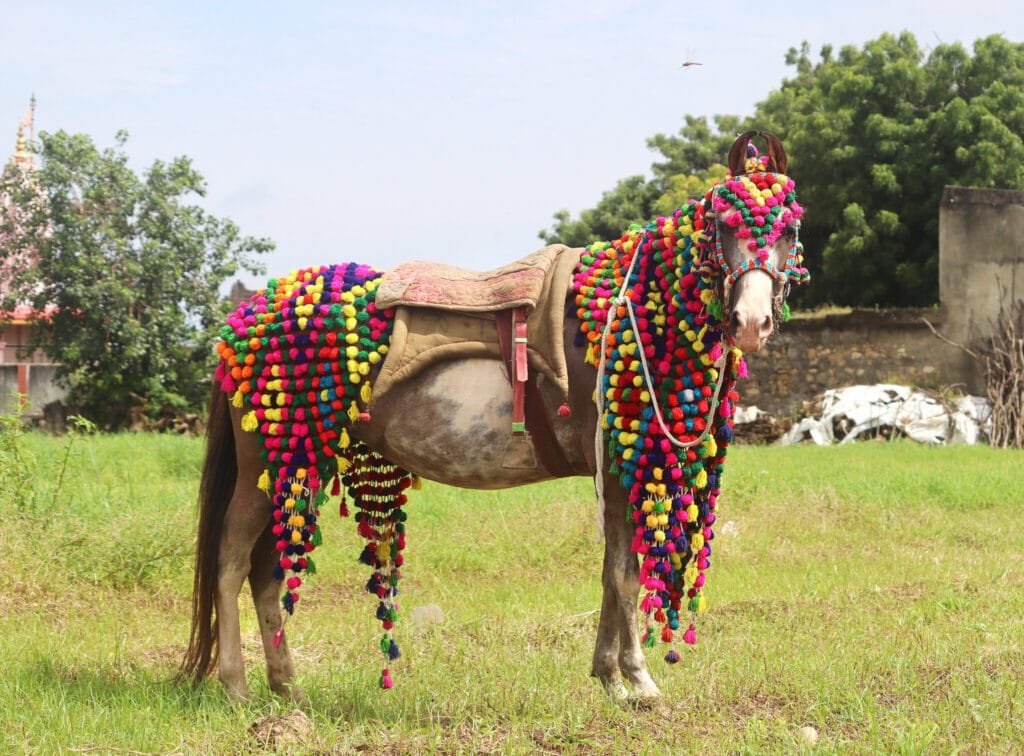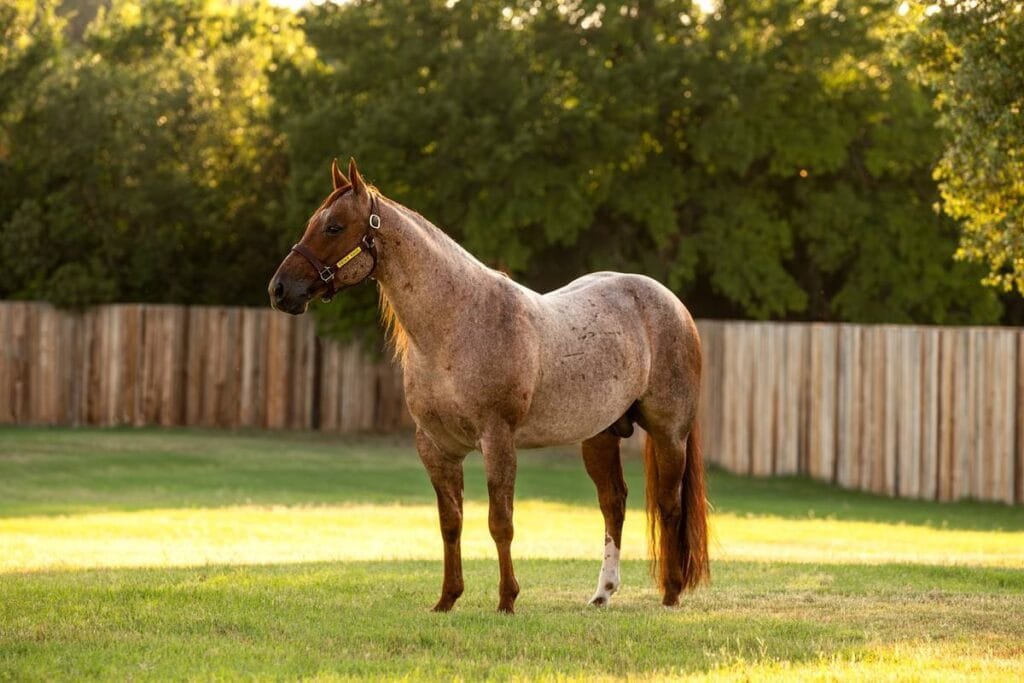The Kathiawari is a rare breed of horse with inward curving ears originating in western India. Most commonly, this unique horse breed is seen in the color chestnut, but it can exhibit a variety of coat colors, except black. It was originally bred as a warhorse and cavalry mount, likely due to its tenacity and impressive endurance. But, as it has gained popularity, Kathiawari horses have found new roles and are commonly used for riding and sports as well as police horses
Kathiawari Horse History and Origins
The Kathiawari horse, originating from the Kathiawar peninsula in western India’s Gujarat state, boasts a rich history deeply intertwined with the region’s cultural and equestrian heritage. Believed to be one of the oldest native horse breeds in India, Kathiawaris have evolved over centuries in the harsh and arid landscapes of their birthplace. Known for their distinctive appearance, characterized by a slightly convex profile, broad forehead, and expressive eyes, these horses embody both strength and elegance. Historically, they served as cavalry horses and were integral to military operations and transportation across the region. Today, Kathiawari horses continue to be celebrated for their endurance, adaptability, and cultural significance, albeit facing challenges to their preservation and promotion amidst modern equestrian practices.
Kathiawari Horse Size
The Kathiawari is a relatively short horse breed, with the average individual measuring about 15 hands, or 60 inches. These horses weigh about 600 pounds, which is not especially heavy.Despite their small, compact body type, the Kathiawari is quite muscular and strong with more endurance than many other breeds.
Kathiawari horse features
| Feature | Details |
|---|---|
| Origin | Kathiawar peninsula, Gujarat, India |
| History | One of the oldest native horse breeds of India |
| Height | Typically 14.2 to 15 hands high (58 to 60 inches at the shoulder) |
| Profile | Slightly convex profile, broad forehead, large expressive eyes |
| Body | Well-proportioned, muscular neck, defined withers, sturdy legs |
| Coat Colors | Bay, black, gray, chestnut; occasionally palomino or buckskin |
| Temperament | Spirited, intelligent, gentle disposition, suitable for various tasks |
| Uses | Traditionally cavalry, transport; now equestrian sports, pleasure riding |
| Conservation | Facing challenges; efforts for conservation and promotion |
| Distinctive | Adaptability to harsh climates, historical significance |
Kathiawari Horse Diet and Nutrition
Kathiawaris are well suited to the desert, so they do not need large rations of food to live. The Kathiawari are relatively low-maintenance horses and do not have meticulous diet and nutrition needs. They enjoy munching on alfalfa, cereal sprouts, hay, and grass and, while they don’t need a ton of water to survive, they should be adequately hydrated with water.
Kathiawari Horse Health and Behavior
The Kathiawari horse breed is generally physically sound. They don’t necessarily need a lot of special care and often don’t have health issues as they are bred to be strong and durable. They do, however, need to be exercised regularly and given adequate attention. This lovable breed will not tolerate being ignored.
Kathiawari Horse Grooming
Although not terribly high maintenance in terms of their grooming regime, after each outing, it’s important to brush your Kathiawari horse to remove any dirt or debris from their coat. Consider using a wet washcloth to further groom them, especially in sensitive areas like the face. Not only will you be keeping your horse clean, but you will also be making them happy with the special attention they crave.Their mane and tails should also be brushed out regularly to prevent tangles from forming .
Adopt Kathiawari horse
.Kathiawaris are not easy horses to come by. Because most of their breeding has been taken over by the Indian government, you will need to go to officials if you are interested. You can also go through the Kathiawari Horse Breeders’ Association to find a Kathiawari for sale or adoption from a reputable breeder.There are scams on the internet claiming to sell Kathiawaris, but buyers should be wary of these offers as it’s difficult to know whether or not a horse is a purebred Kathiawari without the proper paperwork and an inspection by a veterinarian.Always be sure the horse you are adopting or purchasing comes with a clean bill of health.
More Popular Search




